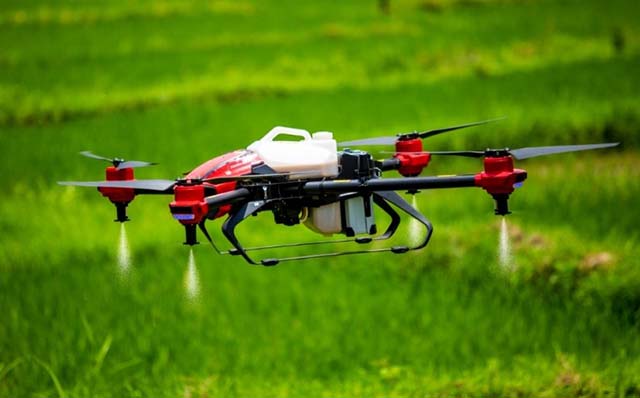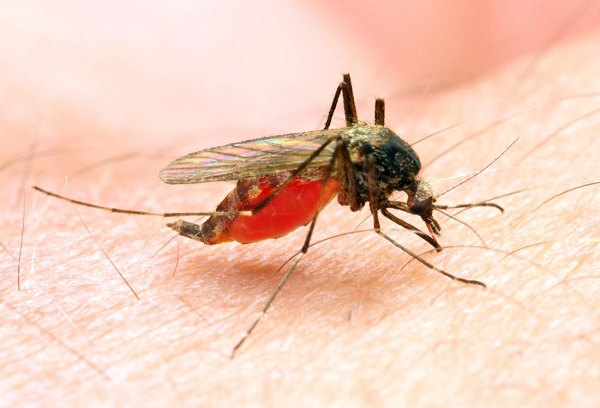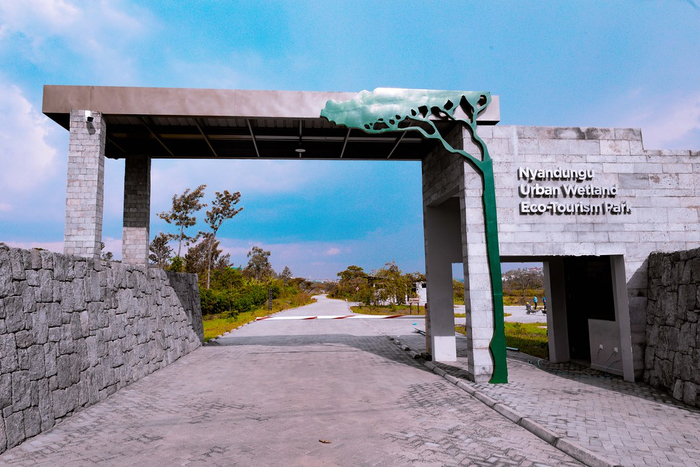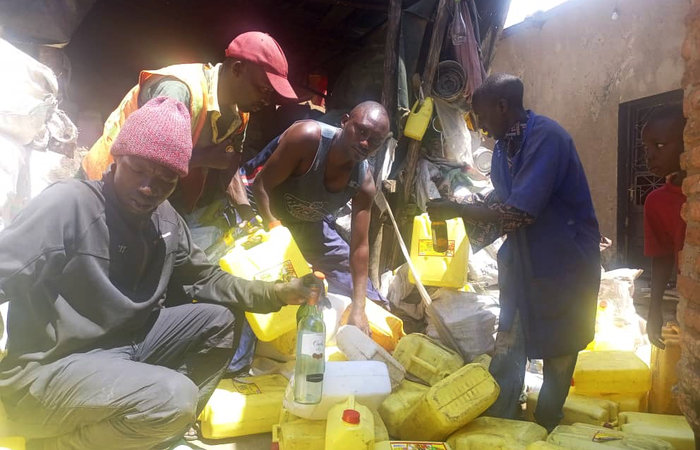By Aimable Twahirwa;
Rwanda is using drones to spray anti-Malaria pesticides in different regions where the mosquito-borne disease prevalence remains among the highest.
Living in a wetland area, Alphonsine Mukakarangwa, a female farmer from Bugesera district, is now pinning hopes on drone spray technology, expecting that it may save her family from the severe malaria.
“It’s easy to get an impression of the way drones spraying solutions are changing our daily lives, malaria is no longer a biggest concern here,” the mother of five says.
Despite huge progress in fighting malaria, the disease remains the main cause of sickness and death in Rwanda, which is situated in an area of Africa where malaria is endemic, according to the World Health Organization.

In Bugesera, a district in Eastern Rwanda, malaria-prone village of Ruhuha, few households possess mosquito nets, even though there is a distribution programme and all pregnant women receive them for free at the health center facilities.
“Some community members started to use the nets on their beds, to protect themselves from the disease, but as soon as they stopped using them correctly, most of them were vulnerable with malaria resurgence,” says Dr William Mugisha, a general practitioner from a private clinic in Bugesera.
Endemic zones
The Rwandan plains in the east of the country are considered an endemic area for malaria while the country’s central high plateau suffers occasional malaria epidemics, experts say.
According to Dr Aimable Mbituyumuremyi, the Division Manager Malaria, Neglected Tropical Diseases and Other Parasitic Diseases Division, the transmission rates of vector-borne diseases like malaria in Rwanda are especially linked to greater population density, migration, and human activities like rice farming, brick making and mining, changing rainfall patterns are a major factor in surges of the disease.
Health officials are currently employing biological rather than chemical components whereby during the spraying process, aerial application use Bacillus thuringiensis serotype israelensis (Bti) – a group of bacteria employed as biological control agents for larval stages of certain insects, including mosquito.
According to Dr Emmanuel Chanda, the Project Officer of Vector Control Operations at the World Health Organisation (WHO) Regional Office for Africa, these are registered as pesticides for control of mosquito larvae in outdoor areas.
The spraying drone has an on-board tank, pump and nozzles and it is powered by batteries.
The operator flies over mosquito breeding areas, usually by a fully-automated system called the ground station, and the downward thrust of the propellers pushes the spray down into zones with the highest prevalence of malaria. Similar to a passenger aircraft, a fixed-wing drone used in spraying process has the ability to take off vertically and transition to horizontal flight.
A solution to man- power and logistics
This specific type of drone has an endurance of around 50 minutes and a range of around 80 miles.
With the ongoing use of drones the fight against Malaria, estimates by the Rwanda Biomedical Centre (RBC) indicates that the country managed to slash the disease cases by 71 per cent between 2016 and 2021. The progress, according to health officials, is largely thanks to robust preventive interventions such as innovative solutions including the launch of anti-malaria pesticide spray using drones.
Officials emphasize reliance on this innovation to replace the man- power and logistics that have been involved in spraying 12 of the targeted 15 districts, especially in the eastern and southern provinces where malaria prevalence remains highest in the country.
Before drone-based solution in the prevention against malaria was introduced, the Government has been using the IRS residual spraying system which requires at least 500 men and women to spray a hectare of land, an activity which costs government between $ 1 to 2 million USD per affected district.

The new spray program launched in March last year is currently piloted by Charis UAS- a local Drone Company, in six high-risk malaria zones across the country at a cost of about $ 60,000 USD.
Technology to destroy mosquito lava
According to the Rwandan minister of Health, Dr Daniel Ngamije, the initiative is part of national efforts to curb the incidence of malaria infections across the country by 90% over the next nine years.
Mamy Muziga Ingabire, the managing director of Charis UAS, explained that the solutions developed are a new part of the innovative strategy.
“We are currently undertaking a viability assessment of UAS services, in the context of supporting existing national efforts to combat Malaria,” she said.

In its latest annual Malaria and Neglected Tropical Diseases Report, the Ministry of Health says that the national malaria incidence reduced from 401 cases per 1,000-person in 2017-2018 fiscal year to 200 cases per 1,000-person in 2019-2020.
This is because the average mosquito larval density was reduced by 89.6%, whereas the average anopheles’ mosquito larval density reduced by 92.8%. In addition, estimates show a drastic decline of malaria incidence in the sprayed areas where malaria was dropped down by 90.6%, the report says.
Limited capacity
Even so, health officials say the aerial spraying has proved precise and effective in killing the larva that spread malaria, some experts in logistics say the existing platforms are not designed to carry large quantity of pesticides used in destroying mosquito lava before they get a chance to nest.
Alfred Shumbusho, a Rwandan expert in aviation industry, such type of fixed-wing drone has a capacity to carry about 10 liters of insecticide – and is only able to maintain a limited distance over a variable landscape.

“Despite this constraint, drone is a highly efficient method to calculate the appropriate amount of pesticide on a particular endemic zone, and deliver it,” he said.
So far Rwanda has updated its comprehensive regulatory guidelines on the use of drones for various purposes including fighting malaria within their airspace. An official permit is required to fly a drone in Rwanda and they may not be flown within 10 kilometers (6 miles) of any airfield.
“There have been impressive reductions in hospital admissions and deaths due to malaria,” said Dr Claver Mugisha an associate medical director at Nyamata hospital.
The use of drones to fight against Malaria in Rwanda is perhaps the best example of this innovation making a clear and direct impact on battling the killer disease. (END)















